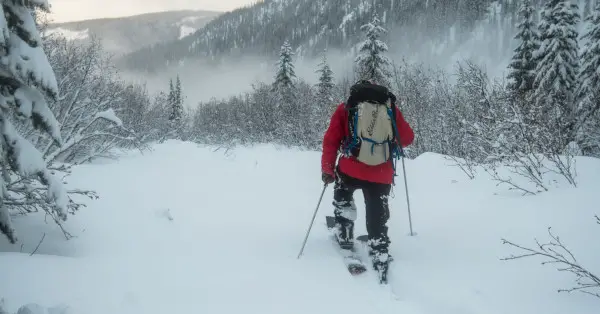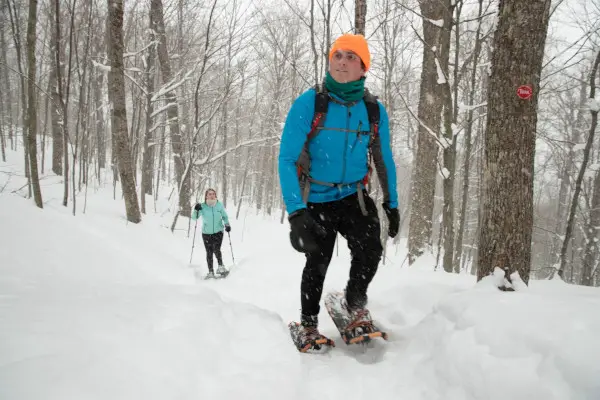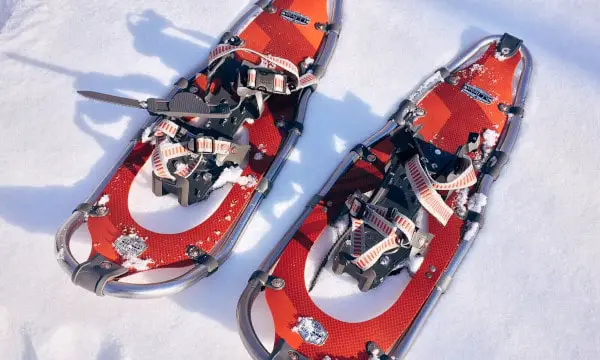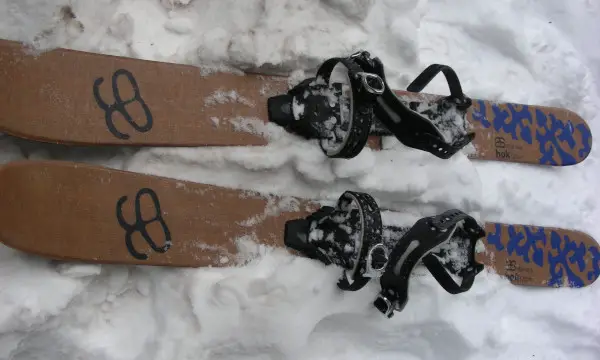Table of Contents
Splitboarding and snowshoeing are equally beloved sports, but they are poles apart from each other.
What is the Difference between Splitboarding vs Snowshoeing?
A split board is a snowboard that can be separated into two separate ski-like parts. Compared to most other equipment, it has an additional metal edge that ensures a better grip.
On the other hand, snowshoeing is an extension of hiking and is done with the help of special snowshoes. It is a more strenuous activity and requires more effort and a good balance. The cost of splitboarding is also higher than that of snowshoeing.
Practicalities
When it comes to ease of usage, snowshoes win. Splitboards come with a lot of different parts and may require more practice for a smooth transition from the split. To change a splitboard from one form to the other requires the removal of the bindings and splitting the board. The entire process takes time and can be tiresome.
You will also need to put on skins on your splitboard when going up. These are strips of fabric that attach to the bottom of your board with the help of sticky glue, tail clips, or tip loops. They help ensure efficiency.
On the other hand, snowshoes aren’t very heavy and are easier to put on. You just need to step into your shoes and tighten their straps, as opposed to setting up an entire splitboard. However, it is worth remembering that although snowshoes will give you a quick head start, they tend to be relatively slower than a splitboard on a snow trail.

Learning Curve
Splitboarding offers a steep learning curve, whereas the learning curve for snowshoeing is pretty short. Compared to the former, you may have to adjust your gait with the latter. This is because you will be essentially walking, so you don’t need to be a professional athlete to snowshoe.
Techniques
These activities are mostly performed in an upward or downward terrain. Here are some things that will help your technique.
Ascending
If you want to keep up with other skiers, you want to make your climb as efficient as possible. Splitboards are a faster way to ascend on more difficult terrains. They are also more comfortable when it comes to deep and soft snow.
Snowshoeing requires more effort and time and can compete with splitboards on shorter and steeper sections of snow. If the snow is a little hard, snowshoes can also provide speed. These are hence better for a shorter distance where you can turn around the edges.
Splitboards should, however, be preferred when ascending a longer terrain. Another advantage of taking them upward is that you won’t need to carry any board on your back that creates an imbalance.
Descending
Once you have gone up, coming down can seem like an easy job, but it’s often more difficult to control speed and avoid accidents when descending. This is why you need to have the right equipment.
Splitboards are less suitable for descending compared to snowshoes. The latter requires walking, whereas splitboards make it difficult to control pace and direction.
All in all, splitboarding allows for easy ascending and snowshoeing allows for easy descending.

Efficiency and Purpose
Compared to snowshoeing, splitboarding is easier as it doesn’t put any extra weight on your back in the form of an extra board. You also need to only slide the board and glide uphill, as opposed to lifting your board and bending your knees. This ensures less effort and better speeds.
However, splitboards are relatively heavier and pose a problem during descent. They are intentionally made to be stiffer so that they offer smoothness on big mountain terrains. However, it is important to remember that splitboards are relatively bad at jibbing than your standard board or shoes.
So, all in all, for shorter trekking, you should invest in cheaper and more comfortable snowshoes. However, for longer terrains where speed and time are of the essence, splitboards will do the trick.
Safety
When it comes to glacier travel, using a splitboard is much safer. Splitboard skis are quite like normal skis and help spread your weight more equally and maintain balance. This prevents you from falling through a snow bridge.
Moreover, splitboards are wider and thus offer more sealskin in contact with the snow. This ensures you have a better grip as compared to less wide snowshoes.
Cost and Equipment
Both splitboards and snowshoes differ a great deal in terms of their costs. A split board snowboard is 40% more expensive than a normal board, but the former lasts a great deal longer.
You will also need to invest in skins that stick on the base of the splitboard for a better grip. Next, you will need poles. There are cheap options available, but you might need to get poles that can collapse into three different sections for better efficiency.
On the other hand, there are plenty of snowshoes out there, but for a reliable product, you may need to invest somewhere between $100 and $150. The poles are the same that are used with splitboards. So if you ever want to upgrade to splitboards, you won’t have to buy new poles.
Summary
There is no fixed metric to judge which of the two is better for snow activities. However, if you are an adrenaline junkie and have the budget, you should invest in splitboarding. On the other hand, if you want something slower, while also burning some calories, snowshoeing is the better option.


